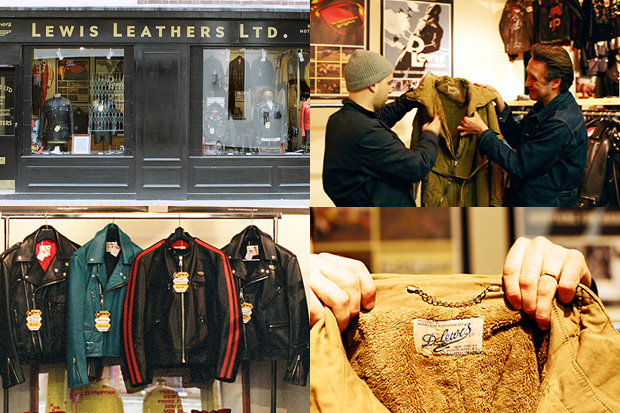The History of Lewis Leathers Part 1
The latest feature from honeyee has the popular Japanese site focusing on the history of Lewis

The latest feature from honeyee has the popular Japanese site focusing on the history of Lewis Leathers with an in-depth interview alongside brand owner Derek Harris. Amongst the many topics, honeyee breaks down Harris’ involvement in the brand and how he managed to make Lewis Leathers into one of the UK’s most enduring companies. Andrew Bunney conducts the interview, which can be seen below.
How did you become involved with Lewis Leathers?
I ended up going to Japan in June 1991, firstly to see some friends of mine that used to come over every six months. I was out there, and this band were touring, so I got a job translating for them, buying their food, lighting equipment and things. I stayed on longer, staying on friend’s floors, I hooked up with these guys that I knew, one of them had a company and said “We need someone to buy stuff for us in London. Would you do it?” “Does that mean I’d be working for you?”
“Well, we can pay you a fee”. So I became a self-employed export agent, but I only worked for them, and I was just finding punk-y gear. One of the first things they wanted was leather jackets. So I said the first thing you want is Lewis Leathers, so I headed off there to take photographs of their jackets and things, and that’s how I first officially became involved.
Were they easy to find then?
No-one wanted Lewis Leathers at that point. I got them for £10 or £15 each. There were other things – we needed to find the right buckles and linings, an evolving thing. Then we got the Bronx and a few more jackets and by the 3rd or 4th jacket I had a bit of a bug. I was really appreciating these things. We got these styles up and running, and Richard Lyon who owned the business from 1986 decided to close the shop. It wasn’t doing well, high-overheads, and he could see that we were doing a couple of hundred a year in Japan, and if he closed the shop then maybe it could grow in profit again, albeit small profits. He had other companies that he was more than happily living from, meanwhile he let me get on with my thing. I’d work until 8 o’clock with my day job, then go down to the factory because they’d be working all hours when they had work to do. I’d go down and make sure they had the collar right and stuff like that. 666(*2) were buying the jackets to sell in Japan, but what I was doing in the evening was purely my own thing. I’d come back home and it would be 11 o’clock, I was having great fun.
How did the range develop?
They probably faltered a bit in WWII in terms of retail sales but there were government orders there. Obviously through WWII it was a bit of a tough time because you couldn’t sell to private flyers because there were no private flyers – you couldn’t have planes flying around willy-nilly in the war, so I think the motorcycle clothing was a bit more concentrated on. Little by little it became more designed for its purpose. So for motorcycling, instead of a coat you’d have a jacket and pair of trousers, or a one-piece suit for flying. They would have giant pockets for maps, or pockets in the trousers because when you’re flying you need a notepad. Cycle gear was becoming more and more specialized.
As we came out of WWII, motorcycles took off incredibly because of petrol rationing. A bike would go much further on a gallon of petrol a week than a car. So you had this huge boom of motorcycling. The catalogues reflect this where in 1952 you have a lot of motorbikes, with a bit of flying gear in, whereas you get to 56 and it’s almost all-motorcycling gear. 58 there is no flying gear at all although you could still buy it in the shop. Flying had moved on too – there were enclosed cockpits on private planes by then, so motorcycling was the place to be for this kind of stuff.
The interview in its entirety can be read here.
